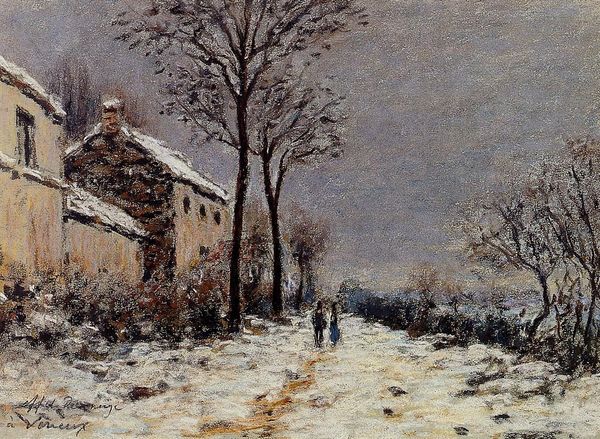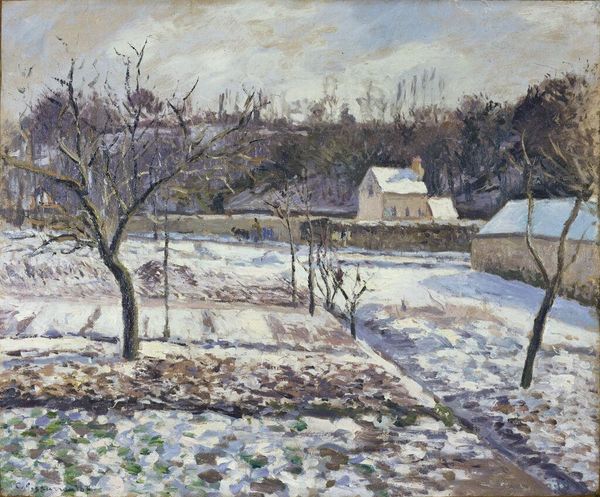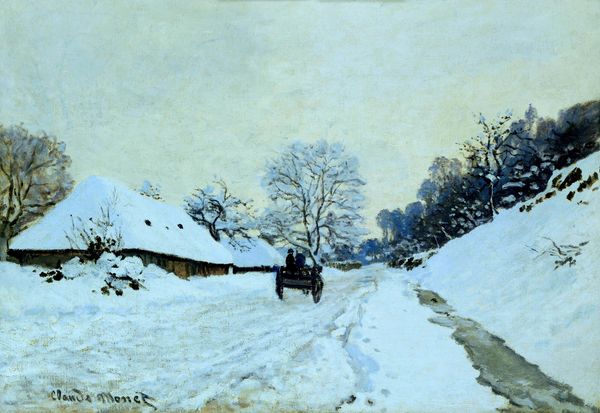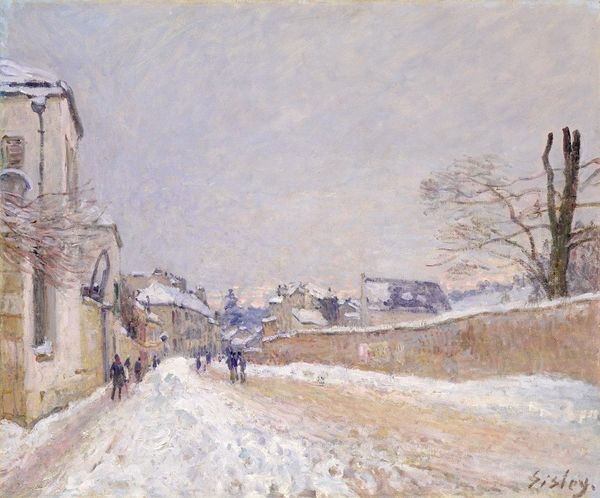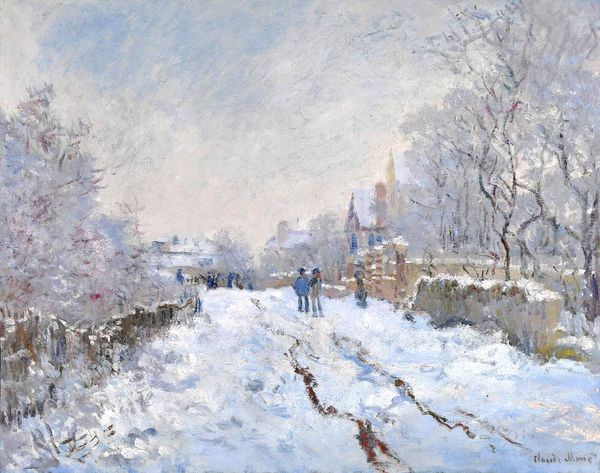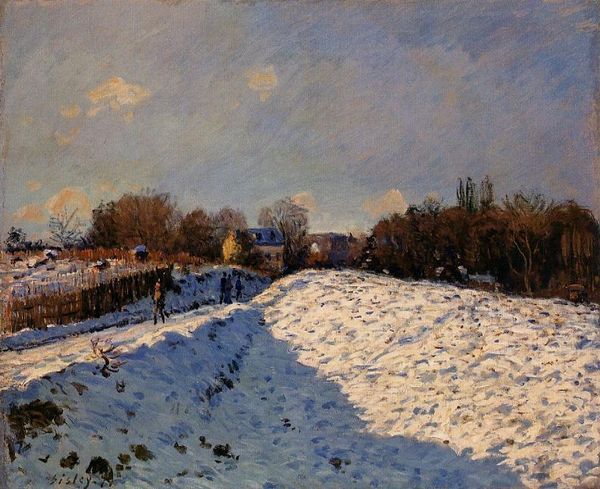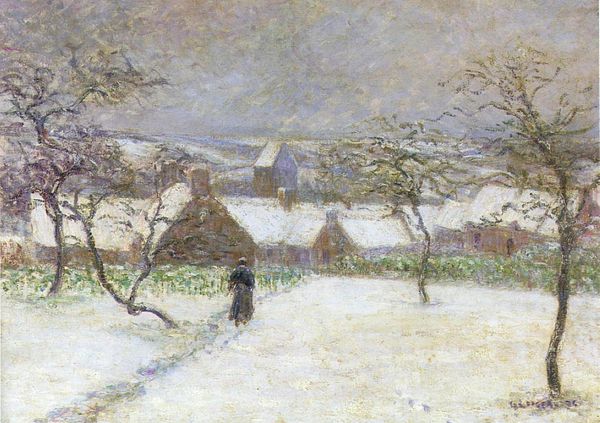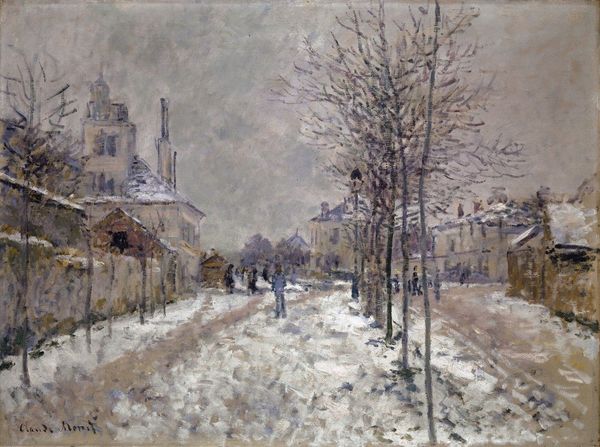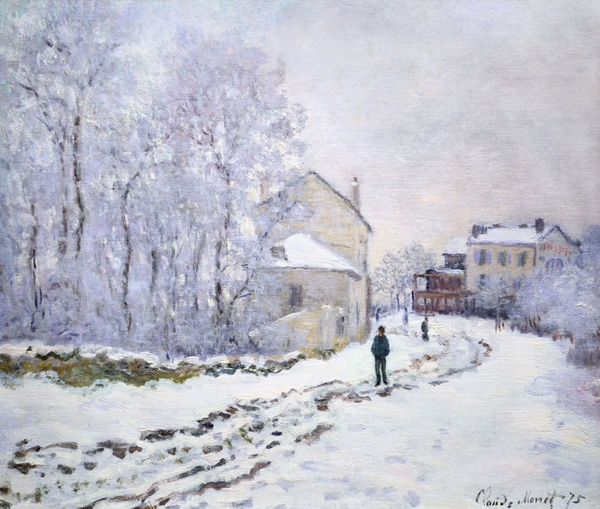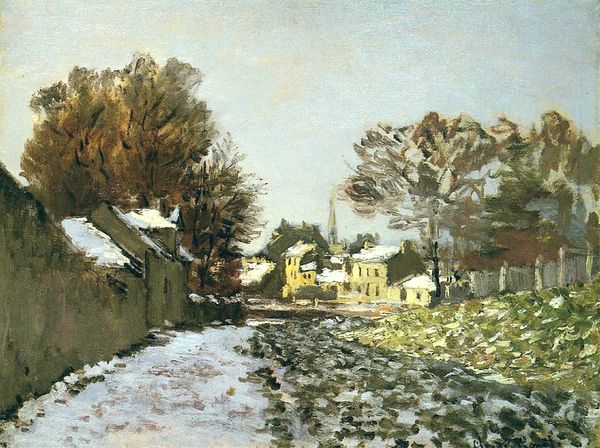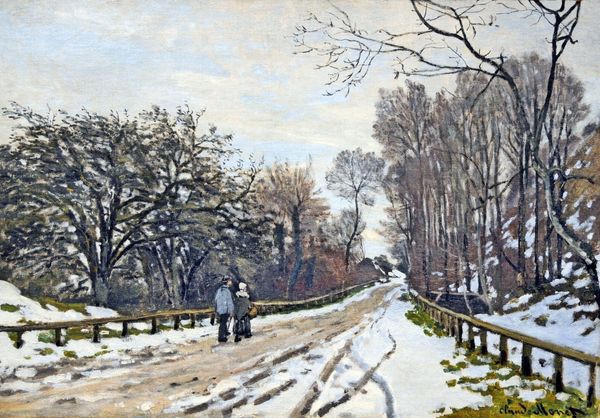
painting, plein-air, oil-paint, impasto
#
portrait
#
tree
#
snow
#
painting
#
countryside
#
impressionism
#
plein-air
#
landscape
#
oil-paint
#
landscape
#
winter
#
impressionist landscape
#
nature
#
impasto
#
cityscape
Copyright: Public domain
Curator: Here we have Claude Monet's "Snow at Argenteuil," painted in 1874. This oil on canvas work captures a winter scene in the French countryside. Editor: The painting feels so muted and soft. It's like a whisper of winter, all grays and subtle blues. A peaceful scene. Curator: Monet was a key figure in the Impressionist movement, known for his interest in capturing fleeting moments and the effects of light and atmosphere. The "en plein air" method of painting outdoors was particularly influential. We can note it in this piece. Editor: Right, you see the raw immediacy. Like he just stepped outside and caught the snow on a whim, the way the world muffled under a blanket of white. The snow isn't just white though, is it? More like shades of violet and lavender? It almost hurts your eyes! Curator: Exactly. It is an unusual chromatic composition. Look closely and you will observe the technique where small, visible brushstrokes are applied to render the sensation of movement and change—visible in the falling snow and in the foliage struggling through the ice. It suggests not merely the sight of winter but also the experience. Argenteuil, where this was painted, was a suburban town west of Paris. During this period, Monet lived there, making the town and its surroundings a key motif for the expression of modern landscape art. Editor: It also reflects the period's industrial expansion; that town became so popular only when people start to build factories there! A landscape painting can be really political. What appears as a cozy rural life here is actually people working on an emerging metropolitan area. Funny. Curator: The rise of the bourgeoisie and an appreciation for the transient experience are mirrored. Monet used art to communicate his political views, like many other artists. It provides an insight into how art reflected the rapidly transforming society of that time. Editor: Yeah, the funny thing is that such works are now safe bets in museum stores for postcards. In the end, it always comes back to being cozy, huh? But you're right, to look at something from an entirely different perspective really makes one appreciate art in so many more new lights.
Comments
No comments
Be the first to comment and join the conversation on the ultimate creative platform.

